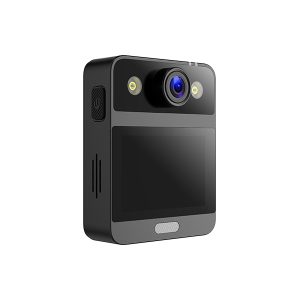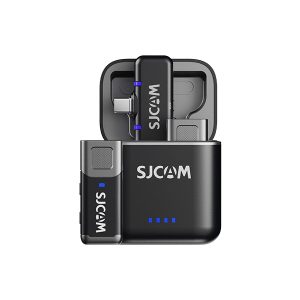How to Effectively Use a Camera Stabilizer for Various Shooting Scenarios?
Camera stabilizers are essential tools for videographers who want to capture smooth, cinematic footage. Whether you’re shooting action sports, weddings, or travel vlogs, shaky footage can ruin an otherwise perfect shot. A high-quality camera stabilizer eliminates unwanted vibrations and jerky movements, ensuring professional-grade results.
Different filming environments require unique stabilization techniques:
- Action Sports: Fast-paced movements demand responsive stabilization.
- Wedding Videography: Emotional moments need smooth, steady shots.
- Travel Vlogging: Uneven terrains and crowds require adaptable stabilization.
This article explores the best camera stabilizers, their features, and how to use them effectively.
Types of camera stabilizers
1. Gimbals
Gimbals revolutionized camera stabilization. These motorized devices use sensors and motors to counteract the operator’s natural movements. They’re versatile, working with various cameras. Gimbals offer smooth, precise control in all directions and quickly adapt to movement changes, ideal for action sports like skateboarding.

2. Steadicams
Steadicams are classic stabilizers. They use a counterbalance system. The operator wears a harness and holds a handle connected to the camera by arms. This results in smooth, floating shots, perfect for creating a cinematic look, such as following an actor through a crowded party.

3. Shoulder rigs
Shoulder rigs are mounted on the operator’s shoulder, providing a stable camera platform. They have a shoulder pad, handle, and camera-mounting plate. Popular among documentary filmmakers, they offer a natural shooting position, reducing arm fatigue. They’re useful for mobile, hands-on shooting, like at a breaking news event.

Key features to consider
1. Weight capacity
A stabilizer’s weight capacity matters. It determines the maximum weight of the camera and accessories it can support. Exceeding this capacity leads to shaky footage. When choosing, consider your current and future camera setups. A heavy-duty DSLR with a large lens needs a high-capacity stabilizer.
2. Battery life
Battery life is important, especially for motorized stabilizers like gimbals. A short-lived battery can disrupt shoots. Look for long-lasting or easily swappable batteries. Some gimbals can power through a full day of shooting.
3. Ease of use
A stabilizer’s usability impacts the shooting experience. Complex stabilizers can be frustrating. Opt for those with intuitive controls and easy setup. Some gimbals can be calibrated and adjusted via a smartphone app, reducing the learning curve.
Using a Camera Stabilizer for Action Sports
Techniques for capturing dynamic movements
When shooting action sports, anticipate athlete movements. Use tracking shots, following the athlete by keeping the camera focused on them and moving the stabilizer in sync. Panning shots, rotating the camera horizontally, are useful for capturing groups of moving athletes.
Recommended settings and adjustments
Set the stabilizer to high responsiveness for action sports. Adjust the camera’s shutter speed to at least 1/500th of a second to freeze action and prevent blur. In low light, consider a wider aperture, but be cautious as it may cause a shallow depth of field.
Keep your movements fluid. Avoid sudden starts and stops. Practice tracking and panning before shooting. Also, monitor the stabilizer and camera battery life, as action sports shots can be long.
Camera Stabilization in Wedding Videography
Wedding videography aims to capture emotions. A stabilizer is key for smooth shots that convey the ceremony and reception’s beauty and intimacy. Shaky footage can distract from precious moments like the first kiss or dances.

During the ceremony, use slow, deliberate stabilizer movements. Avoid sudden pans or tilts. For example, pan slowly as the bride walks down the aisle. At the reception, use tracking and panning to capture the dance floor’s energy.
Create seamless transitions. Use slow pans or tilts when moving from the ceremony to the reception. Zoom in or out sparingly, only when it enhances storytelling.
Travel Vlogging with a Camera Stabilizer
Travel vlogging involves various environments. In crowded cities, a gimbal is ideal for navigating and getting stable footage. On mountain trails, a shoulder rig offers stability against terrain bumps. Adjust stabilizer and camera settings based on lighting and environment.

In crowded areas, be aware of your surroundings and move quickly to avoid collisions while keeping the camera steady. On uneven ground, plant your feet firmly and use a wider lens to reduce excessive camera movement.
Smooth footage in travel vlogging helps tell a compelling story. The viewer should feel part of the journey. Use the stabilizer to capture different shots and smooth transitions to guide the narrative.
Conclusion
Camera stabilizers ensure smooth, professional footage across action sports, wedding videography, and travel vlogging. Understanding types and features and learning effective usage can boost videography skills.
To enhance your knowledge, explore the tutorial video series. It visually demonstrates techniques, whether you’re a beginner or experienced.
Mastering camera stabilizers is crucial for better videography. It takes time and practice, but the results are rewarding, elevating footage and storytelling. Experiment with different stabilizers and techniques to improve.
Latest Blog Posts







 Tmall Store
Tmall Store Jingdong Store
Jingdong Store Aliexpress Store
Aliexpress Store Amazon Store
Amazon Store




































